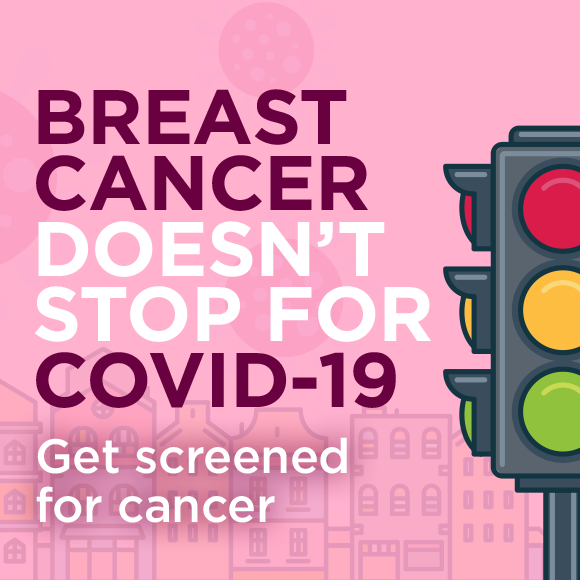Encouraging Breast Cancer Screening in Northwestern Ontario
Published Tuesday, November 2, 2021

Encouraging Breast Cancer Screening in Northwestern Ontario
By Caitlund Davidson, Prevention and Screening Clinical Services
October is Breast Cancer Awareness Month. Every year, approximately 12,000 Ontario women will be diagnosed with breast cancer and approximately 2,000 will die from it. Breast cancer is the most common cancer in Ontario women, but more people in Ontario survive breast cancer than almost every other cancer thanks to advances in treatments and routine cancer screening. Getting screened regularly is important because it can find breast cancer early when treatment has a better chance of working.
Studies have shown the pandemic has had a negative impact on breast screenings with a 41 per cent drop in cancer screening tests in Ontario in 2020 compared to 2019 pre-pandemic levels. Fortunately, those statistics are starting to bounce back. For example, in June 2021, monthly breast screening tests were about 9 per cent above June 2019 levels.
“We have been taking all measures to stay safe during the pandemic, including staying home, but getting checked for breast cancer is still important,” said Dr. Nicole Zavagnin, Regional Primary Care Lead for Ontario Health-Cancer Care Ontario at Thunder Bay Regional Health Sciences Centre. “Health care providers and hospitals are taking all necessary precautions to ensure the safety of patients and staff. We encourage you to get screened and make sure you stay up-to-date with your breast cancer screening.”
The Ontario Breast Screening Program (OBSP) provides breast cancer screening throughout Ontario to two groups of women: those at average risk and those at high risk. The OBSP recommends that:
- Most people ages 50 to 74 who are eligible for the OBSP get checked every two years with a mammogram.
- People ages 30 to 69 who meet the High Risk OBSP eligibility criteria get checked once a year with both a mammogram and breast magnetic resonance imaging (MRI) (or screening breast ultrasound if MRI is not medically appropriate).
- People ages 70 to 74 who are already in the High Risk OBSP get checked once a year with a mammogram through the program.
“Breast cancer doesn’t stop for COVID-19,” said Zavagnin. “Northwestern Ontario screening rates have been lower due to the COVID-19 pandemic and more people are being diagnosed with advanced cancers. Getting screened regularly with mammography can help to identify breast cancer early, before it causes symptoms.”
Breast cancer screening is a service available to all eligible people in Ontario, and mammograms can be booked without a health care provider’s referral. In our region, mammograms are offered at 5 permanent locations and via mobile service:
- Fort Frances: Riverside Health Care, call (807) 274-4804.
- Kenora: Lake of the Woods District Hospital, call (807) 684-7777.
- Sioux Lookout: Sioux Lookout Meno Ya Win Health Centre, call (807) 737-6579.
- Thunder Bay: The Linda Buchan Centre at Thunder Bay Regional Health Sciences Centre, call (807) 684-7777 or Thunder Bay Diagnostics call (807) 683-4411.
- Screen for Life Coach: a mobile cancer screening service that travels across our region in the warmer months and offers its services in Thunder Bay over the winter, call (807) 684-7777.
Talk to your family doctor or nurse practitioner about your breast health and screening test options. To learn more, visit www.tbrhsc.net/cancerscreening.